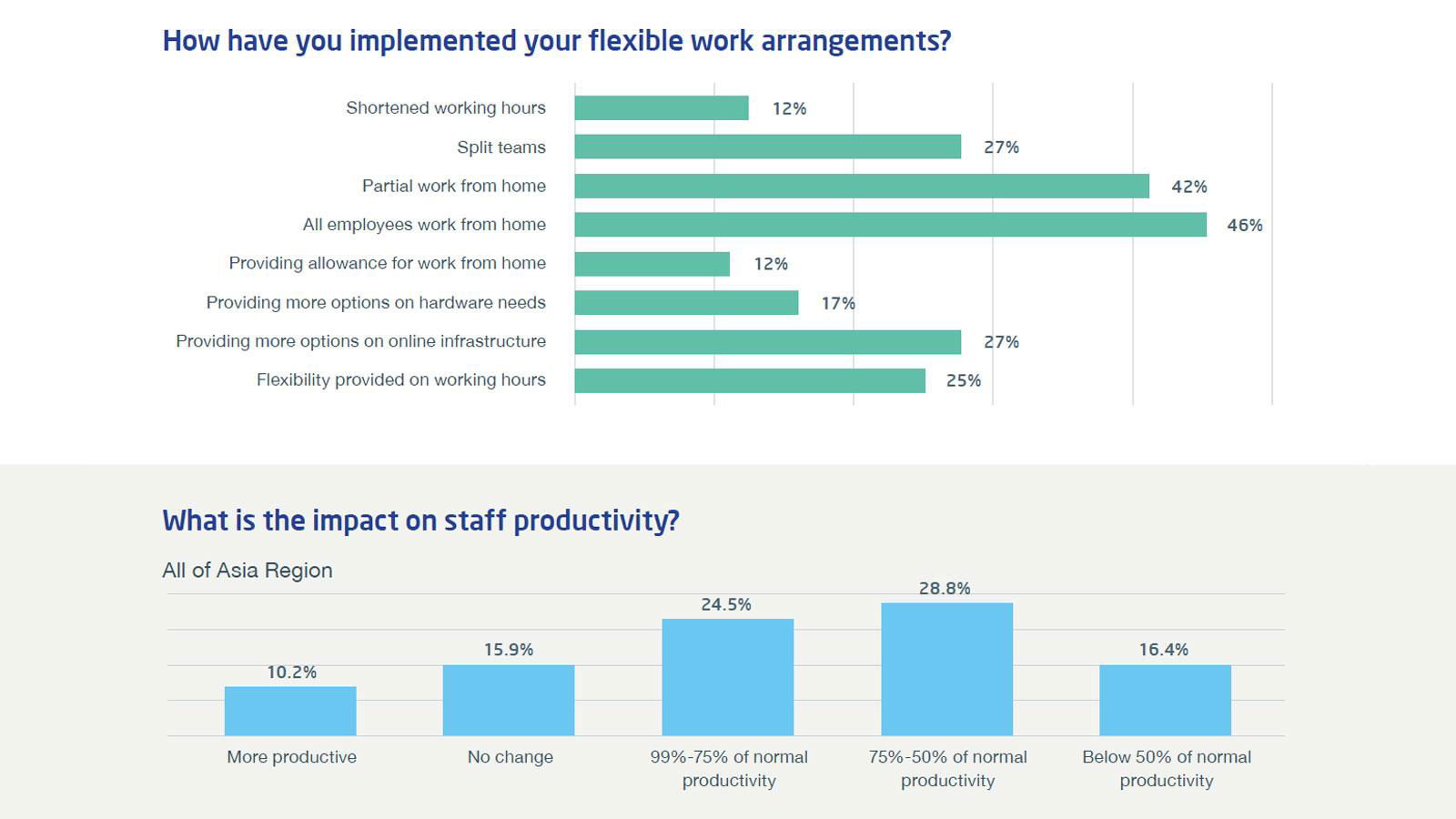share on
Nearly all employers surveyed in May 2020 (98%) across Asia have admitted that their business operations have been impacted by COVID-19, with most expecting the effects to continue for some time.
In fact, one-third (35%) predict the impact from the pandemic will last for six months; 27% believe it will be for up to one year, and 16% are preparing for this to last more than one year.
Among one of the biggest changes to working models, 94% of companies surveyed in Asia have adopted flexible work arrangements (FWAs), as a result of which two-thirds of employees (68%) say flexible working hours are now the most important aspect of work-life balance.
These results are derived from RGF’s Talent in Asia report, which gathered responses from more than 4,600 employers and candidates across 10 industry sectors. Trends were captured across 11 countries and markets in Asia: Singapore, Malaysia, Indonesia, Philippines, Thailand, Vietnam, India, Mainland China, Japan, Hong Kong and Taiwan.
The following are some key pan-Asia highlights from the report:
- 60% of employers are planning to maintain flexible work arrangements beyond the pandemic. This sentiment is the highest in Japan (79.8%), followed by 67.7% in the Philippines, and 64.2% in Thailand. The sentiment was relatively lower in Greater China (46.9%) and Indonesia (46.6%).
- The most common form of FWAs is having all employees working from home (46%) or partial working from home (42%). Also popular are split teams (27%), more options on online infrastructure (27%), and flexibility in working hours (25%).
- Did flexible working have an impact on productivity? The results are mixed. About 28.8% of pan-Asia respondents said they saw 50-75% of normal productivity, while a relatively similar 24.5% said they noted 75-99% of normal productivity. (refer to image above for more details)
- Companies did put in place conscious measures to help increase productivity, among which 52% vouched for having more frequent video calls with the team. Regular and open updates through internal channels was cited by 46%, while one third (35%) referred to clear KPI and goal-setting between reporting manager and subordinate.
- One of the biggest concerns of the hour is headcount management, whereby the results are mixed. While 31% said they have seen no change in headcount, a similar 30% said they have implemented hiring freeze for new headcount. Further, 26% said hiring has been postponed until COVID-19 is over.
Lead image / RGF
share on
Follow us on Telegram and on Instagram @humanresourcesonline for all the latest HR and manpower news from around the region!
Related topics


